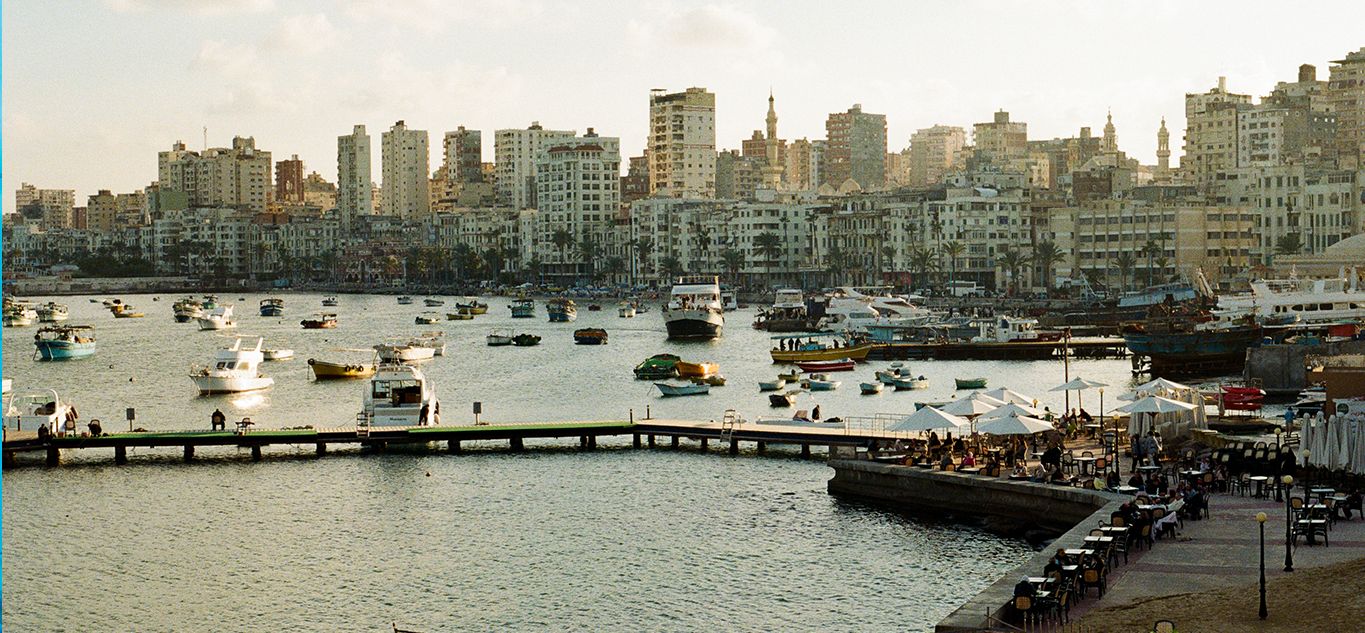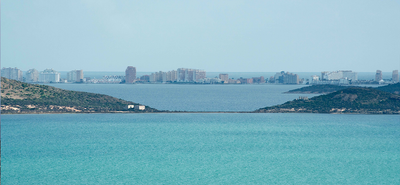- by Alexander Durie and Heba Khamis
- This piece has been published in conjunction with The Guardian.
ALEXANDRIA, Egypt — On a sunny January morning in El Max, west of Egypt’s second city, Alexandria, where a canal meets the Mediterranean Sea, Ahmed Gaz is untangling his fishing net on the beach after landing his catch at dawn.
Like almost everyone in the neighbourhood, Gaz was born and raised by the water, destined to fish for a living: “My whole life is in the sea. My life, my work and my livelihood.”
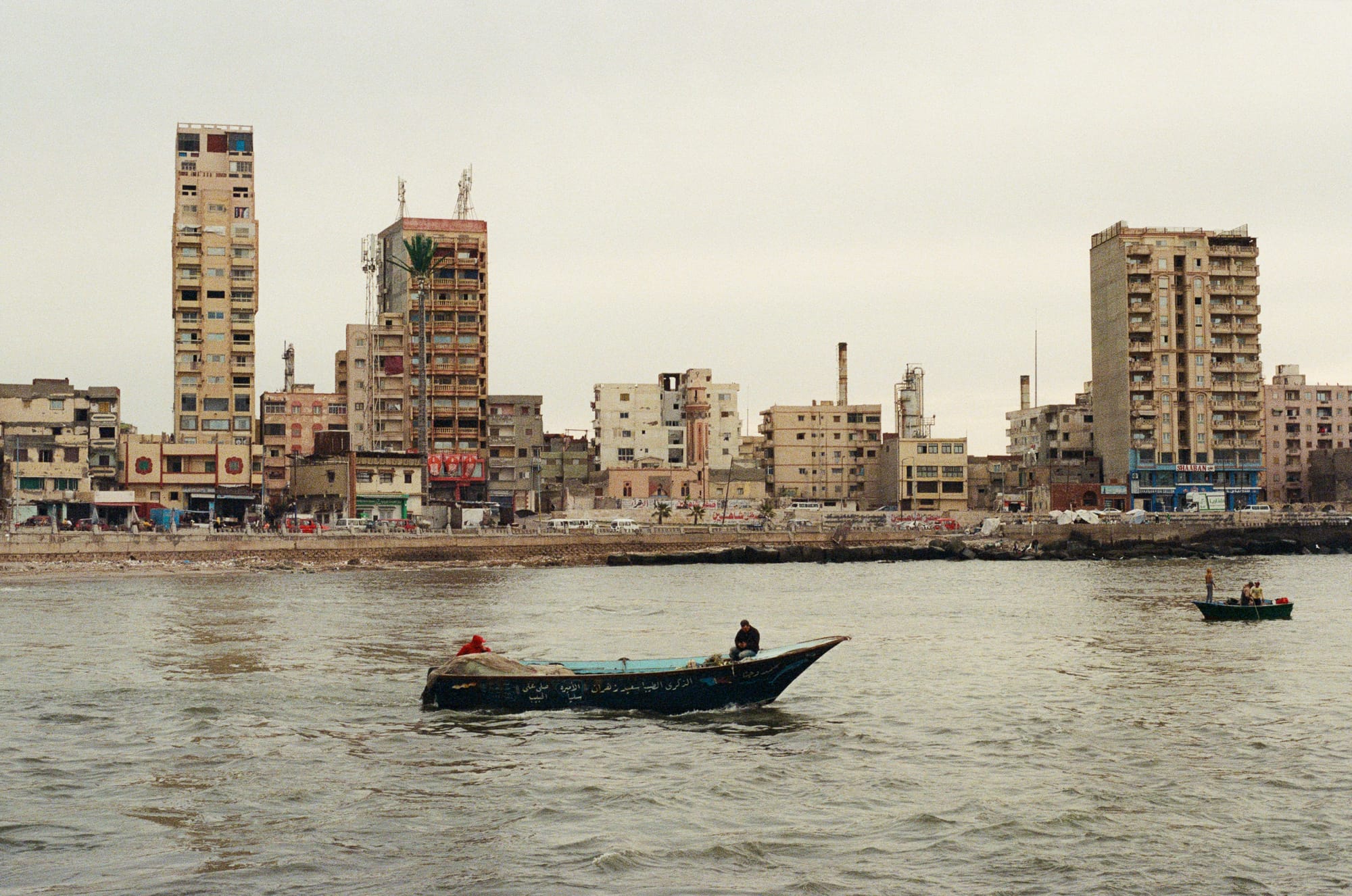
Alexandria is one of the world’s sinking cities, along with Venice, Miami, Lagos, Jakarta and others. An IPCC report predicts that with global sea levels rising at the current rate, and without adequate preventive measures, thousands of square kilometers (about a thousand square miles) of the Nile delta could be fully submerged by 2100.
Like the rest of Egypt’s Mediterranean coast around the delta, El Max also faces several other environmental risks, including land subsidence, soil erosion, earthquakes and water pollution from nearby petrochemical plants, which all add to the increasing vulnerability of the area.
The people of El Max will, at some point, have to move to survive. However, a Mixed Migration Centre study that interviewed 100 residents of the suburb found that 90 percent of them had no plans to leave the area and only a handful believed that the rising water was even a threat.
“I trust my eyes, not the weather forecast,” Gaz says.
Mohamed Abdrabo, director of Alexandria University’s Research Centre for Adaptation to Climate Change, says: “Part of the problem is that when people talk about the impact of rising sea levels in Egypt, and especially in Alexandria, they are talking about what’s going to happen by 2100.”
“And with the economic situation,” he adds, “people are not interested in the far future.”
The fishing community in El Max is witnessing the effects of the climate crisis but often without the awareness of its long-term impacts, Abdrabo says.

“This year the sea is moving back behind the island [by the lighthouse of El Max, about 50 meters or 160 feet from shore],” says a young fisherman on El Fanar beach. “We used to swim to reach this island, now you just walk to it.”
Another adds: “We used to catch 50 kilos [110 pounds] of fish [a day]; now it’s only 10 kilos [22 pounds].”
Part of the difficulty with trying to get local communities to engage with the problem is that the threat of Alexandria sinking and disappearing is far from a recent phenomenon. The city has suffered many catastrophes before and survived, says Yasmine Hussein, an Alexandrian researcher.
Egypt’s second-largest city, founded in 331BC by Alexander the Great, has experienced “seven or eight” tsunamis throughout history. One of the biggest, in 365AD, was caused by an 8.5-magnitude earthquake in Crete that had disastrous effects across the eastern Mediterranean, she says.
“It caused water to go inside the soil and destroyed the entire ancient port. Some archaeologists believe that the temples of Alexander the Great and Cleopatra are still underwater, because the royal neighborhood was completely sunk.”
Another tsunami struck in 1303 and caused the Lighthouse, or Pharos, of Alexandria, one of the seven wonders of the ancient world, to be submerged.
“People always say that life in Alexandria is a cycle, just like the cycle of life,” Hussein says. “It is born and becomes a major city, then it falls and slowly disappears completely. And then it is reborn, like a phoenix.”
In its present cycle, the city has a different dynamic. A number of Alexandrians say they are worried about how rapidly the coastline is being developed by authorities.
Hussein describes how Alexandria has lost more than 40 percent of its beaches in the past 25 years from a combination of coastal erosion, heavy construction and privatization of coastal areas. “This is happening at an unprecedented speed in the city,” she says.
She adds that while last year Alexandria was recognized by Unesco as Egypt and Africa’s first “tsunami-ready” community – meaning that it met key indicators for mitigating the risks of the devastating waves and other coastal hazards – Hussein and other local researchers feel that the city is not prepared at all.
“If there’s an earthquake nearby, what are we going to do?” Hussein asks.
The local government has installed concrete blocks along Alexandria’s corniche to protect the shore, but several experts say this is an unviable solution in the long term because water goes under the blocks and into the soil.
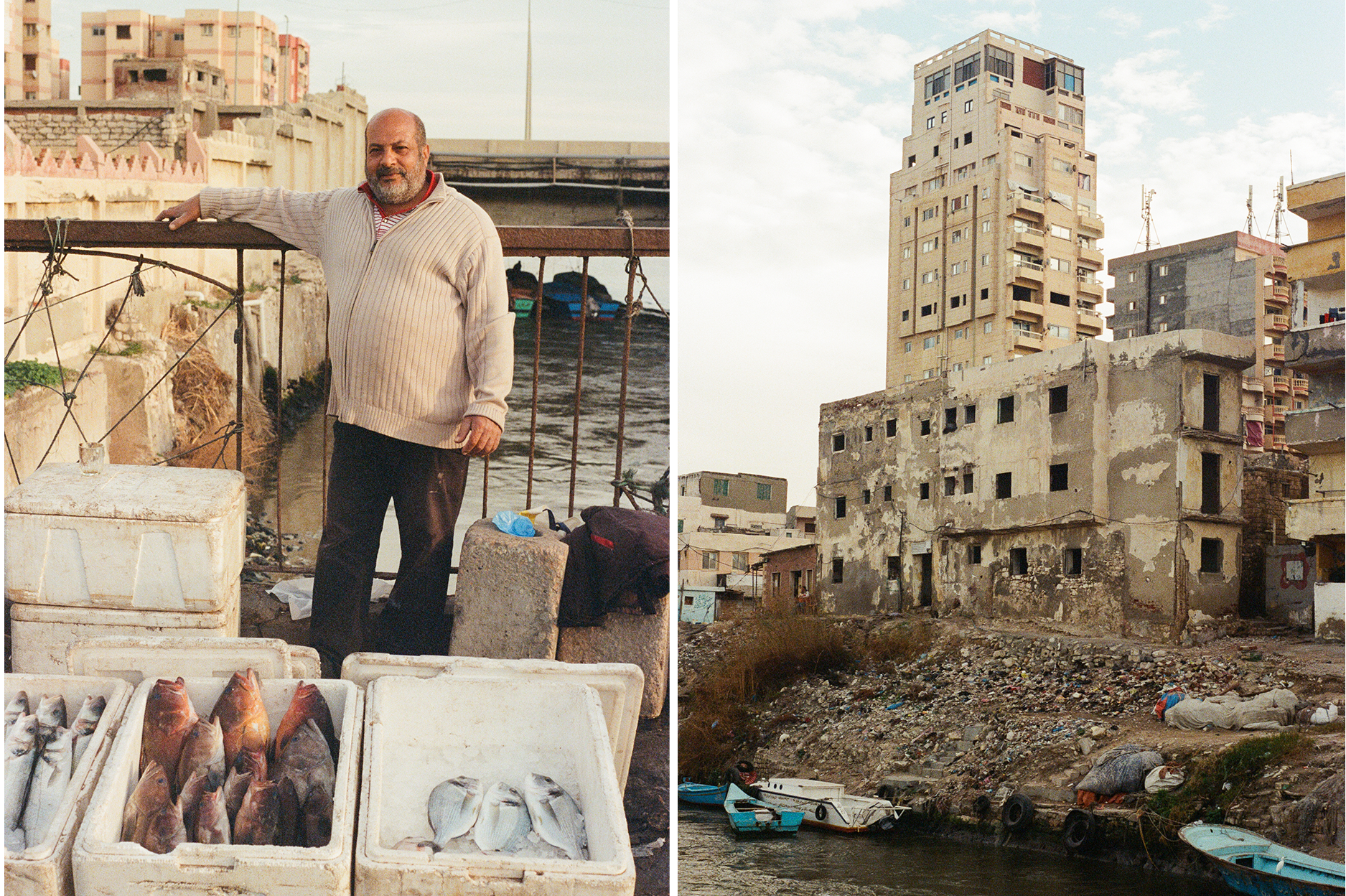
Some of the fishing community have already been moved to high-rise buildings farther inland after their houses were flooded.
But for some in El Max, settling away from the coast has been a challenge. “I’m like a fish. If they remove me from the sea, I’ll die,” says As Elsayed Ibrahim, a local fisherman.
Abdrabo says: “People in Egypt, generally speaking, are very attached to their land.” It is an attitude that applies across the country, he says, particularly to those who make their living from fishing and farming.
He says people’s attachment to their local area ought to be recognized in any long-term plan for the region but ultimately: “Whatever you do in coastal areas will get back to you. You cannot win against nature.”
Umm Amr has been running a kiosk on El Fanar beach all of her life. She was initially skeptical about the climate emergency, but after learning about the catastrophic floods along the coast in Derna, Libya, in 2023, she was scared, thinking that if it could happen to “our neighbor”, it could happen to El Max too.
“They [authorities] want us to leave here, but I don’t know where to go,” she says. “I grew up on the sand of El Max and lived here among good people who love each other. This sea is my soul, and I cannot live without it.”
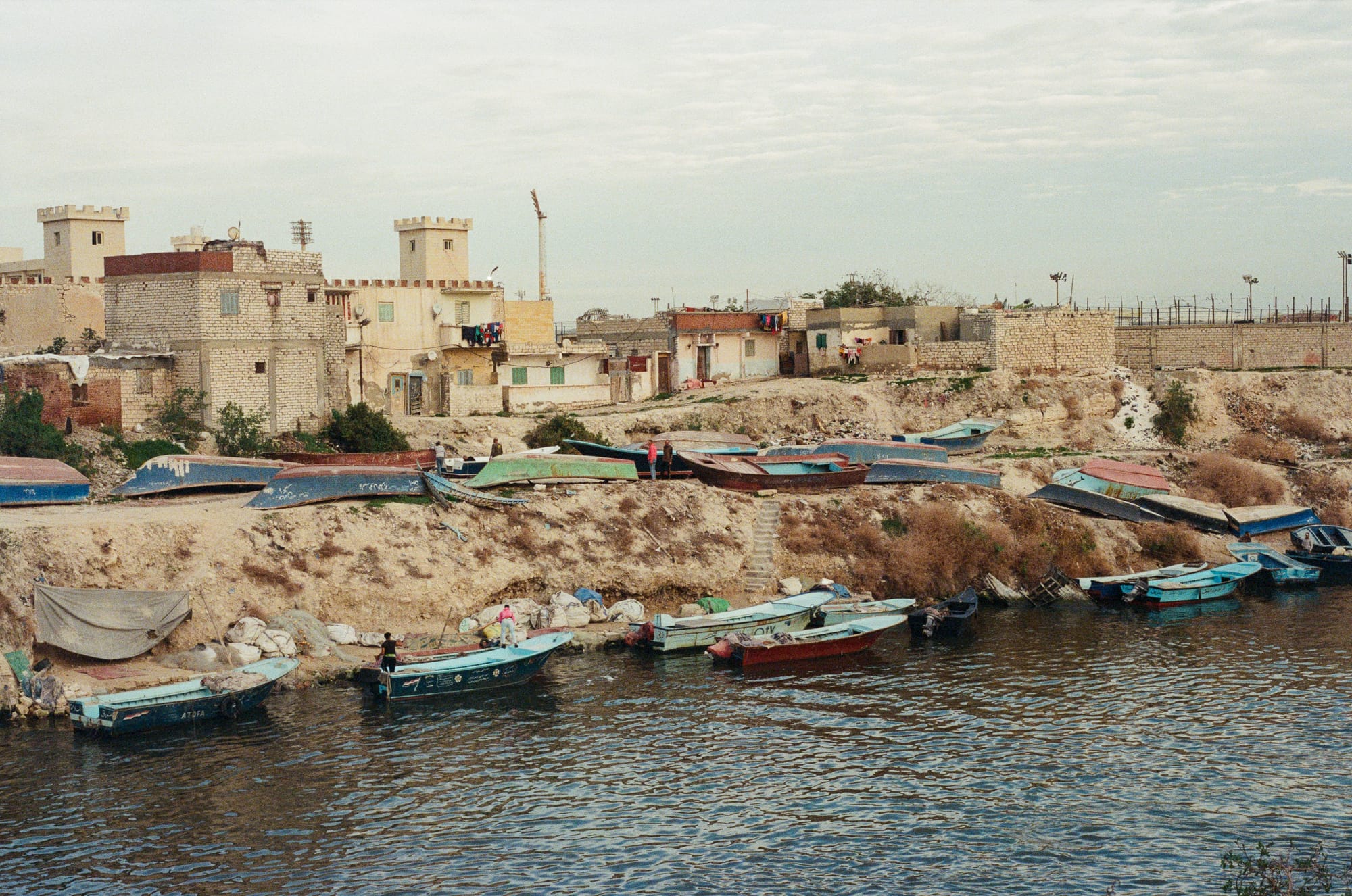
To leave and abandon this bond with the area is not easy for local people, despite the increasing risks. “It’s better to stay and find ways to adapt,” Hussein says, suggesting that people in sinking cities around the world could collaborate and share strategies on saving their hometowns. “All we’re asking for is that we’re given the tools to learn how to adapt.”
In a statement, Egypt’s Ministry of Water Resources and Irrigation said: “The projects in Alexandria are part of the coastal-protection projects the ministry is implementing to counter the negative effects of climate change, provide protection for citizens and facilities, and stabilize residential and industrial areas and low-lying areas from the risk of rising sea levels.”
Top image: Central Alexandria seen from the Qaitbay Citadel, where the ancient Lighthouse of Alexandria used to stand over a thousand years ago (Alexander Durie)
Editor’s Note: This story is part of the series “Communities on the Frontline,” which offers a preview of the magazine we have in mind. It was produced as part of the first edition of the Magmatic School of Environmental Journalism.
